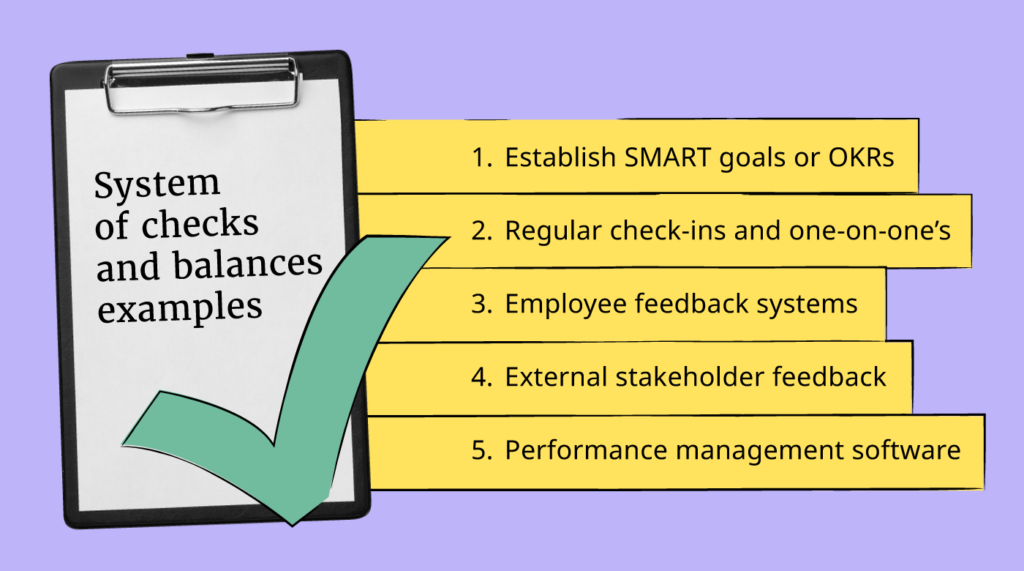As a kid, I was never great at getting to appointments on time. Unfortunately, this bad habit trickled through to my first job out of university, working in human resources at a downtown hotel.
One morning, my manager hosted a meeting of other HR leaders and asked me to join. As usual, I showed up ten minutes late, even though I tried (in my mind) to be there on time. After the meeting, she asked me into her office, explained how disappointed and embarrassed she’d been by my lateness, and told me, politely but firmly, to never be late again.
I took that feedback to heart and made sure to never be late to that job again. Why? Because I knew the expectation was reasonable, she delivered the feedback perfectly, and I also respected the heck out of her.
Building on that experience, this article digs into the basics of why dealing with underperforming employees is important, how to know when a team member is underperforming, and five simple steps for managing underperforming employees.
Jump to:
- Options for dealing with an underperforming employee
- Why dealing with underperformance is important
- How to know when someone is underperforming
- How to correct someone's performance
What are your options when dealing with an underperforming employee?
There are many examples of underperformance, or when an employee fails to meet performance standards or expectations, such as:
- Poor work quality
- Inability to meet goals or deadlines
- Continued interpersonal conflict
- Poor time management
- Excessive absenteeism or lateness
- Insubordination.
When a team member is demonstrating poor performance in some area of their work, you can either:
- Ignore the problem: stick your head in the sand, and hope the poor performance will miraculously fix itself.
- Fire the employee: terminate your team member’s employment and hire someone new.
- Do the employee’s job for them: step in and take on the aspects of their work that they’re underperforming in.
- Move them to a different role: they’re underperforming in their current role, but maybe they could do better in a different one.
- Correct the performance issue: implement a structured performance improvement process, which can include additional training and development.
While the focus of this article is on option ‘5’ above, generally because it’s the best option to explore first, it’s not always the right option.
Why dealing with poor performance Is important
When it comes to deciding on one of the options outlined above, consider the following:
- Costs of employee turnover: according to Benefit News, a single resignation can cost a company up to a third of the employee’s annual salary. Two-thirds of this cost can come from things like reduced productivity and training someone new, with the other third coming from “hard” costs like recruiting.
- Impact on team morale: unless the underperforming employee works in a bubble, the odds are their co-workers are being negatively impacted in some way by their performance. Ignoring the problem or doing things for them doesn’t send the right message to the rest of your team.
- Respect for employees: firing someone might sometimes seem like an easier path, but if you’re “too quick on the draw”, especially if it’s an issue that could be corrected with a little effort, your team may see that as a lack of respect for the people you’re responsible for and can undermine feelings of psychological safety.
- Costs of correcting performance: sometimes, getting an underperforming employee to perform may simply be too expensive, too time-consuming, or impossible for other reasons. In these cases, you may need to make the tough decision to let someone go or move them into a different role.
How To know when an employee is underperforming
In the case of my habitual lateness, the issue was made clear to my manager when I finally showed up late for an important meeting. However, it’s not always this obvious.
I remember working with one team member, a manager, who I thought was doing well. He was delivering on his performance goals, I’d received positive feedback from other managers, and customers liked him.
However, when I talked to people who reported to him, I learned that there were issues. This prompted me to begin a performance improvement process.
Below are some of the many systems of checks and balances you can put in place to give you early warning about real or potential performance issues.

- Establish SMART goals or OKRs: these provide a solid foundation that you and your team member can use to check progress. For example, if you both agree on a goal to “achieve weekly sales of $10,000”, and your employee is only closing on $5,000 per week, this could be an indication of poor performance.
- Regular check-ins and one-on-one’s: whether they’re virtual or in person, 1:1s are a critical part of assessing how an employee is performing. You can check in with your employee, hear from them about what they’re working on, learn about their progress toward goals, and understand any issues that may be affecting their performance.
- Employee feedback systems: I learned about my team member’s poor performance from skip-level meetings I had with members of his team. Employee surveys, 360-degree performance reviews, and casual conversations with your employee’s co-workers are also useful feedback methods that can alert you to possible performance issues.
- External stakeholder feedback: in addition to employee feedback, it’s important to get feedback from people outside of the organization, such as customers, partners, and suppliers. Data from things like customer reviews, Net Promoter Scores, and satisfaction surveys can often yield valuable insights into an individual’s performance.
- Performance management software: most of the checks I’ve listed above can be implemented using good performance management software. This enables you to capture individual, team, and organizational performance data. Many software packages also provide data analytics, reporting, and automation to make things easier.
5 steps you Can take to correct performance
One of your early warning systems has helped you identify a performance issue with one of your employees, and you’ve decided to try and correct the problem. Great, so now what?
The steps you take will vary slightly on the exact nature of the performance issue, but the ones outlined below will apply to most situations where it’s just one aspect of an employee’s performance that’s a problem (e.g. lateness).
If it’s the rare case where they’re underperforming in all areas, it may be worth considering moving the employee into a different role or out of the organization entirely.
Step #1: Check your facts and do some research
Before you even talk with the employee, be prepared to do your homework. There may be a variety of other reasons unrelated to your employee’s work that are impacting their performance, such as personal issues, underperforming colleagues, or lack of understanding of the expectations.
For example, if a customer is complaining about the technical support they received from someone on your team and the phone or email interaction was recorded, take the time to review the information. If your employee is behind on a project that relies on other individuals or teams, check in with those other employees to see if they’re on track with their deliverables.
Step #2: Reassess your performance standards
I remember working with salespeople to set revenue targets and, as often happens, pushing them to achieve higher numbers. In hindsight, there were many times when my expectations were completely out of line with the reality of what was achievable.
Before you talk with your underperforming employee take a long, hard look at your expectations of their performance and ask yourself these questions:
- Have my performance standards recently changed e.g. become higher?
- Has my employee ever met these standards since they’ve been in place?
- Have other team members been able to achieve the same standards?
- Have I added new responsibilities that might be interfering with their performance?
- Have I provided my team members with all the training and resources they need to meet my expectations?
Step #3: Conduct a performance management discussion
Once you’ve done your research, reviewed your performance expectations, and are reasonably certain there’s a legitimate performance issue, it’s time to talk with your employee.
In my experience, performance discussions are an art form. There’s no recipe on how to conduct one since every issue is different and every person takes feedback differently. That said, you can find some best practices in our article, “How to Conduct a Better Performance Review”.
In addition to those practices, try the following:
- Be concise: don’t beat around the bush; get right into explaining as concisely and factually as you can what the issue is from your perspective, and that the purpose of the meeting is to get their thoughts and come up with an action plan.
- Be clear: they may not be meeting performance standards simply because they don’t understand why they’re important or how they impact their team or the organization.
- Be honest: it’s OK to tell them if their poor performance leaves you feeling disappointed, embarrassed, or even angry. Similarly, if the issue is so serious they’re on the verge of being fired, they should know that too.
- Be respectful: honesty is never an excuse to be rude or demeaning to an employee. It’s good to communicate hard messages as long as you’re doing it calmly and with respect.
- Be empathetic: try to imagine how the conversation is going from their perspective. Is this a big surprise for them? Are they feeling overwhelmed or anxious? Are they dealing with personal issues?
- Be curious: make sure to solicit their thoughts and opinions, and ask lots of open-ended questions. This will help you get the whole picture, help them realize there is an issue (if they’re defensive or defiant), and get them involved in the solution. For example:
- How are you feeling about your progress toward your project milestones?
- What support are you getting from engineering on building that new feature?
- Why do you think we missed that customer’s deadline?
7. Be supportive: explain to them how you’re prepared to support them, whether it’s with additional training and development, changes to their job, or simply emotional support.
Assess how the performance discussion goes before deciding whether to jump right into the next step of developing the performance improvement plan, or postpone it to a subsequent meeting.
In some cases, your employee may be emotional and not in the right state of mind to discuss an action plan, or the issue may be more complex and require some deeper work to figure out.
Step #4: Develop a performance improvement plan
Once you and the employee agree that there is a performance issue and that you’re both committed to resolving it, it’s time to put together a performance improvement plan. This will typically include:
- Performance standard description: describe the aspects of the employee’s performance they’re working on e.g. sales goal achievement, co-worker communication, etc., and the specific standard they’re trying to achieve e.g. weekly sales of $XX.
- Action plan with SMART goals: detail the specific “baby steps” that the employee can take to achieve the performance standard you’ve set e.g. take a strategic selling course by XX date, reach out to YY prospects on LinkedIn by ZZ date, etc.
- Time period for evaluation: define how long the employee has to correct their performance. Typical plans range anywhere from 1-6 months depending on the performance issue.
Statement on importance: briefly describe why the performance standard is important to the organization. If the poor performance is serious enough, you may also need to state that their continued employment may be at risk if they can’t meet expectations.
Step #5: Check progress and recognize results
With everything clear and your performance improvement plan in place, it’s time for you to support your employee through executing it.
A critical part of this execution is getting regular feedback from you that they’re on the right track (or not).
Conduct regular 1:1 check-ins on their progress and, wherever possible, recognize and reward positive results. You can also use these check-ins for course corrections, help them through any obstacles to progress, and adjust the plan if necessary.
One last piece of advice
If you’ve made it this far, congratulations! As a small token of my appreciation, let me leave you with one last piece of advice that I’ve taken to heart when it comes to managing underperforming employees: always assume positive intent.
In my experience, most people want to perform their work well, and they take pride in a job well done.
No one likes feeling or knowing that they’re doing a poor job so, until you know otherwise, assume that your team member will want to fix their performance as much as you do. This can help pave the way to a great collaboration and get things back on track.
As always, best of luck and subscribe to the People Managing People newsletter for more regular expert-written articles and resources to help you on your leadership journey.
Some further reading:


